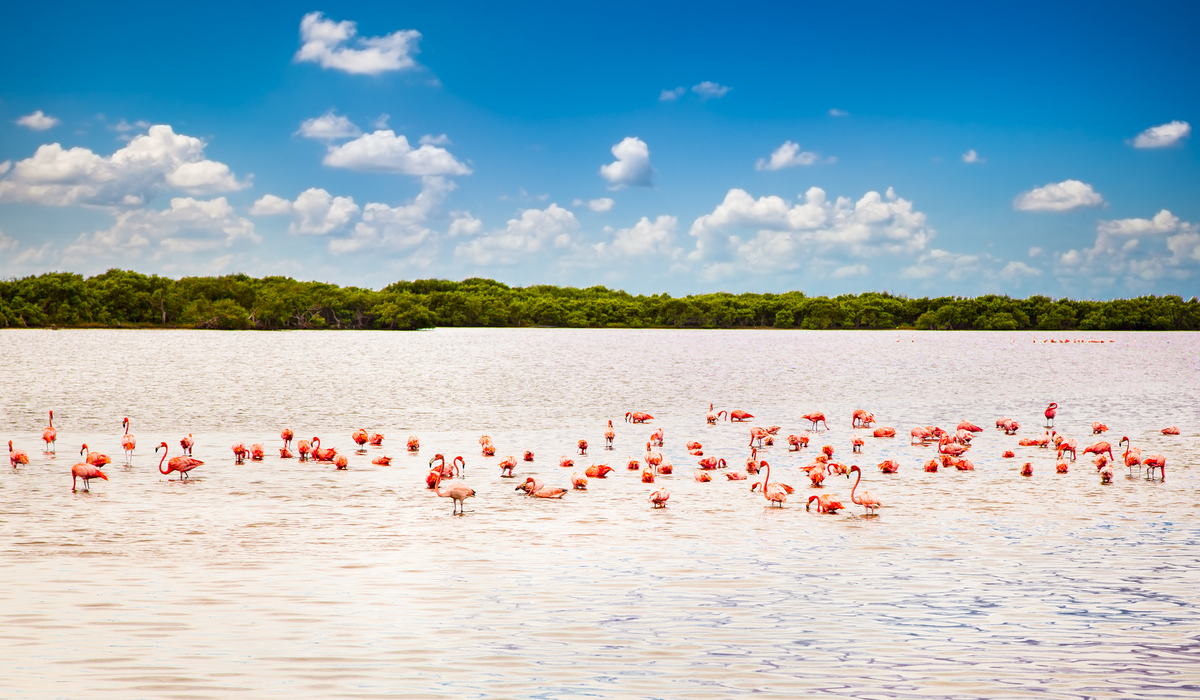A big part of the Riviera Maya is the Caribbean Sea that lines the beautiful beaches and frames the sunrise each morning. It is also the home of the second largest barrier reef in the world – The Mesoamerican Reef, the playground and observation area for divers and snorkelers who travel to see the tropical fish and coral that makes up this glorious live aquarium.
Did you know that Mexico has declared just under 500 square kilometers (123,553 acres) of the reef system a protected national marine parks? Thankfully since 1996 the local environmental agency with the federal government has been declaring these sensitive marina areas as national parks that can only be used for recreational and cultural activities.
This is similar to how the US and Canada protect and regulate their State, Provincial and National Parks. The areas are protected from industrial activities to preserve the natural areas for our enjoyment, learning and marine research. We are all responsible for the protection of these areas.
In Canada there a few national marine parks, the Fathom Five National Marine Park being one of the largest at 112 square kilometers in Ontario. The Allan Tremain National Marine Park located in the US in New York State is under 1 square kilometer but a protected marine park. The Dry Tortuga National Marine Park just off the coast of Florida is one of the largest at 260 square kilometers.

Where are the National Marine Parks in the Riviera Maya
Puerto Morelos, just south of Cancun, has over 90 square kilometers of the Caribbean Sea and the Mesoamerican Reef designated as a National Marine Park. In 1998 this area was declared a Marine Park thanks to the local help of activists that wanted to preserve this portion of the Mesoamerican Reef.
Visitors can enjoy snorkeling and diving with local guides in the marine park, and will be charged an extra 25 pesos per person to be able to enjoy these activities and help monitor the area and environment. A small price to pay (1.75 Cdn or 1.25 USD) to protect an area for generations to come. This area includes portions of the reef closer to Cancun to the north and any marine areas in front of the Puerto Morelos.
Cozumel Island – The southern shores of Cozumel were declared a National Marine Park in 1996 and covers an area 120 square kilometers. Like Puerto Morelos, all divers and snorkelers will be charged 25 pesos for the park entry when participating in any water sports activities. All water sports require a local guide who help to monitor and protect the reef system.
Xcalak has over 180 square kilometers of National Marine Park which includes Chinchorro Banks, a remote atoll but important diving and snorkeling location. This area was declared a National Marine Park in 2000.
Isla Mujeres, a small island just off the coast of Cancun declared their National Marine Park in 2000 and is 85 square kilometers.
But What About the Biospheres and National Parks?
The local biospheres in the Yucatan Peninsula are not included in this list of protected areas. Why? The biospheres, recognized by UNESCO and the federal government include land, sea and bodies of water (cenotes and lagoons). This is an entirely different classification and separate set of environmental protection regulations outside of the Marine Park System.
What is impressive and relatively unknown is this statistic – The Yucatan Peninsula has over 11,264 square kilometers/2,783,395 acres of protected biospheres! This includes Sian Kaan south of Tulum, Calakmul in the State of Campeche, Rio Lagartos and Celestun just west of Merida.
A Treasure Trove of Protected Areas In the Riviera Maya
So there is more to the beach in the Riviera Maya. These protected areas are being preserved so all of us can enjoy and understand indigenous marine species and coral types. We love that areas are protected, love that we can continue to enjoy the hundreds of tropical fish found in the Caribbean and participate in the continued protection and preservation of our oceans and seas.
Want to snorkel in these areas in the Riviera Maya? Check out our list of dive centers and snorkel tours so you can witness these protected areas first hand.
Curious about the Biospheres and National Parks? Read more about Rio Lagartos and the Sian Kaan, or consider a trip to the Calakmul Ruins located in the heart of the Calakmul Biosphere.
